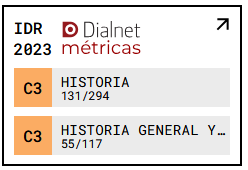Soundless music of the Adalid Collection or the invisibility of domestic music-making of male elite society during the Restoration period
DOI:
https://doi.org/10.18172/brocar.2538Keywords:
Performance and soundless music, collecting, domestic music-making, chamber music, serious music, upper-class music, music and image, male musicAbstract
During the period of European Restoration (ca. 1815-1848), the Adalids and the Torres, two related upper-bourgeois merchant families resident in the city of Corunna, used a major part of the family fortune to achieve the cultural level consistent with their social status, which included music as a principal element. Two great score collections provide the documentary evidence for this cultural investment together with pictures, letters, notary records, accounting books, bills, etc. We start with a discussion of whether it is possible to consider a score collection such as the Adalid Collection to be music, a question that arises due to the scarcity of visible marks denoting the existence of music-making in the scores. Consequently, the first aim of the present text is to demonstrate that in this kind of collection the performance marks in the scores are far from being the determining criteria of whether the pieces were actually performed. In addition, we will show that a collection with the characteristics of the one that is the object of our study, gives the question “what is music?” a different interpretation, closer to the social, cultural and economic representation of music, in this case, of a wealthy and powerful group of men of Restoration period Spain.Downloads
Download data is not yet available.
Downloads
Published
2013-12-20
How to Cite
Queipo Gutiérrez, C. (2013). Soundless music of the Adalid Collection or the invisibility of domestic music-making of male elite society during the Restoration period. Brocar. Cuadernos De Investigación Histórica, (37), 61–86. https://doi.org/10.18172/brocar.2538
Issue
Section
Articles
License
The authors retain copyright of articles and authorize CIF the first publication. They are free to share and redistribute the article without obtaining permission from the publisher as long as they give appropriate credit to the editor and the journal.
Self-archiving is allowed too. In fact, it is recommendable to deposit a PDF version of the paper in academic and/or institutional repositories.
It is recommended to include the DOI number.
This journal is licensed under a Creative Commons Attribution 4.0 International License











